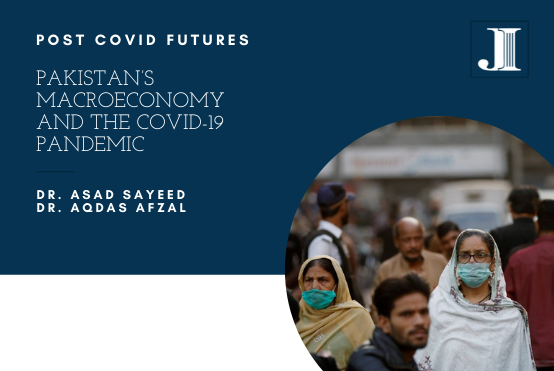Post COVID Futures
Chapter 1: Pakistan’s Macroeconomy and the Covid-19 Pandemic
by: Dr. Asad Sayeed and Dr. Aqdas Afzal
Date: June 9, 2021
Nothing has had a more deleterious impact on the global economy in about a century since the Great Depression than COVID-19. Pakistan has by and large evaded the pandemic’s worst fallout as the disease has had a varying intensity as elsewhere in the region, and our partial lockdowns allowed both industry and transport to remain functional through this period. COVID’s third wave is reportedly on the decline across Pakistan, but the shocks felt through the economy over 2019-20 continue to reverberate into the current financial year. After close to 70 years, a negative GDP growth rate was recorded in 2019-20, FBR revenues were nominally below GDP growth and the budget deficit was at a historic high. The pandemic also exacerbated the rising the levels of poverty and inequality across the country.
As 2020 progressed, some indicators of Pakistan’s macroeconomy improved. The current account deficit turned into a surplus for the first six months of the year – largely on the back of increasing remittances and low oil prices – and revenue growth also improved. Still, all prognoses of Pakistan’s economy going into the future are far below countries that have had a much more severe impact from COVID-19 than Pakistan, and experienced longer and stricter lockdowns. According to the latest estimates by the International Monetary Fund (IMF), Pakistan will keep facing anaemic economic growth numbers in the range of 1.5% as opposed to 6% for China, 11.5% for India, 6.7% for Malaysia, and 4.4% for Bangladesh.
This chapter will contextualise the weak structural foundations of Pakistan’s economy, necessary to mark out a prognosis for recovery in a post-COVID future. Subsequently, we critically appraise the policy instruments used by the government in the midst of the pandemic on the benchmark of their impact on growth, stabilisation and on alleviating the stress that the poor and vulnerable have been subjected to.

